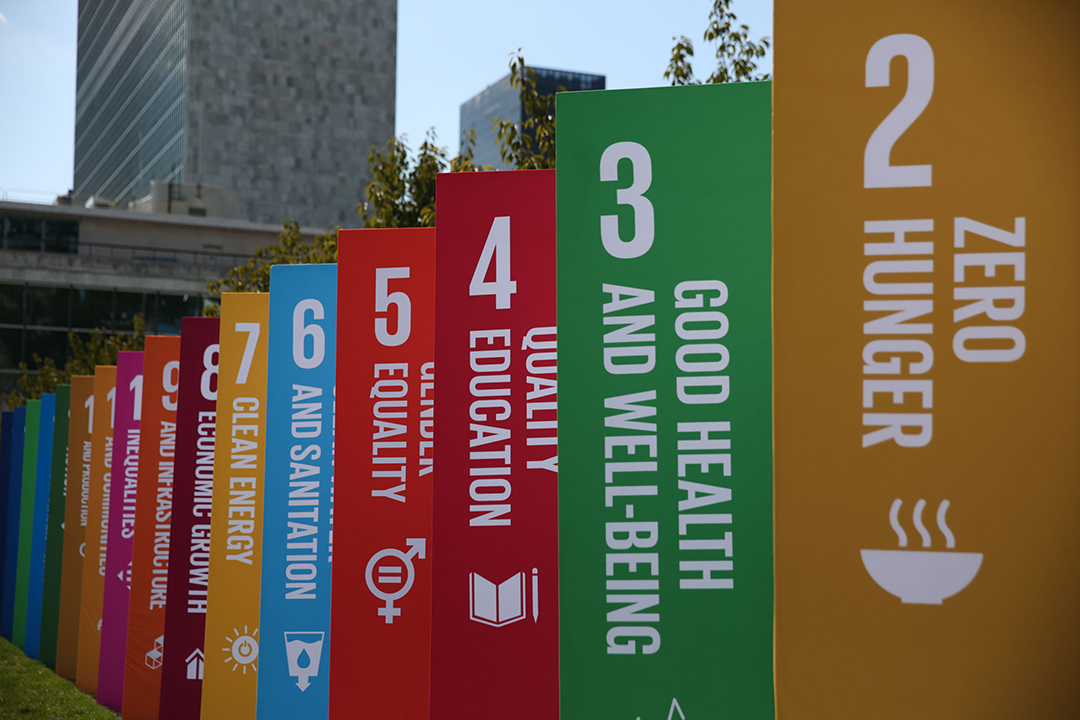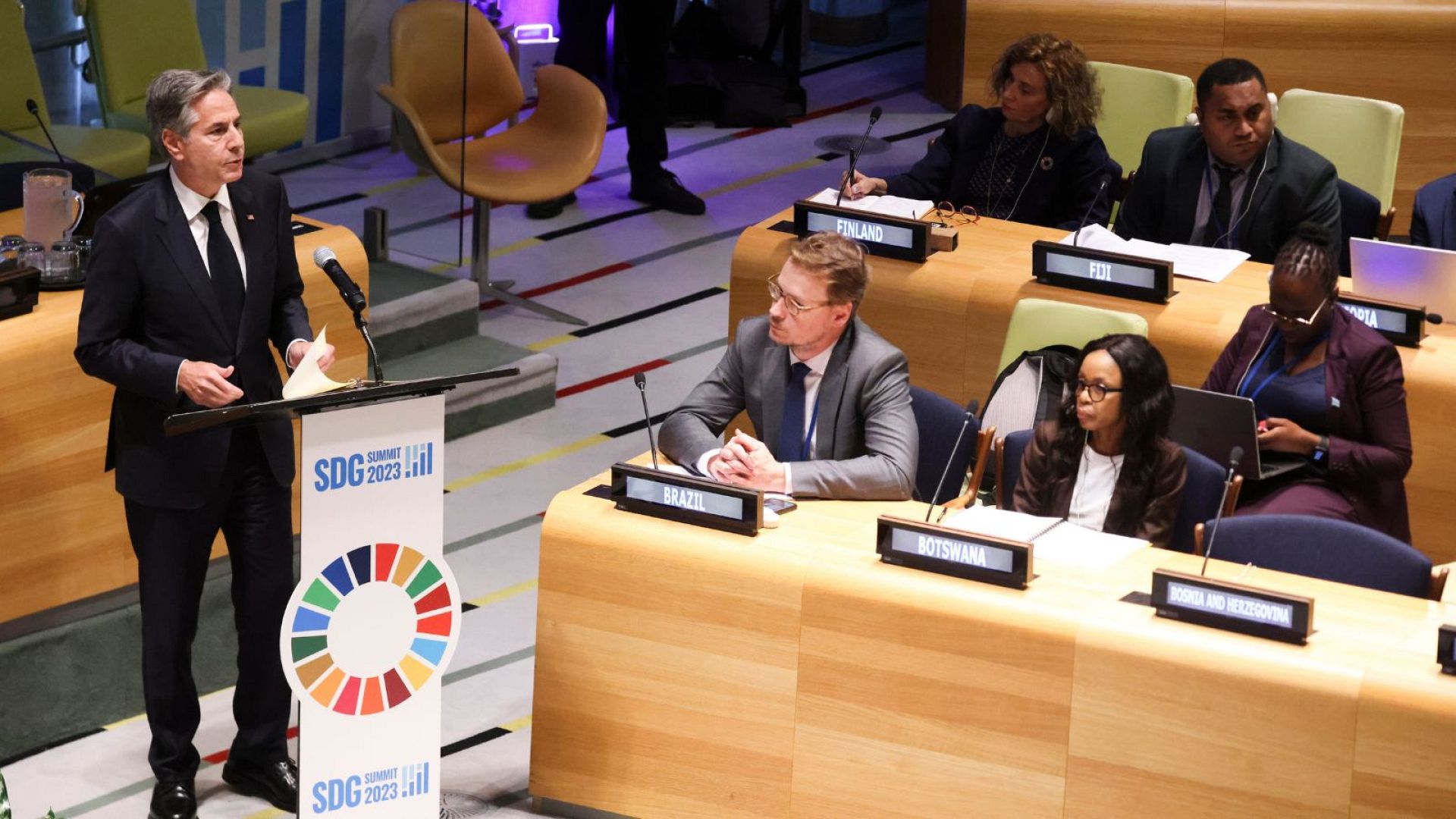Connecting nature, climate and the economy to create global sustainability solutions
The link between climate change and biodiversity loss is crucial but still under-prioritized by businesses and policymakers. Protecting and restoring nature is essential to achieving climate goals, as ecosystems like forests and oceans act as vital carbon sinks. Businesses are increasingly adopting nature-positive strategies that restore ecosystems and assess their impacts on nature, creating economic opportunities and jobs. The upcoming COP16 and other UN events offer a chance to accelerate action, showing that a net-zero and nature-positive future can go hand in hand.

- The complex interrelationships between climate and nature are recognized by scientists but are still being insufficiently prioritized by policymakers and businesses.
- With the right strategies, prioritizing nature and climate can be compatible with economic growth and value creation.
- This coming season of UN Conference of the Parties (COP) meetings and other sustainable development gatherings offers an unprecedented opportunity to accelerate integrated action for nature, climate and land.
Nature is the colour of our lives, encompassing all that exists in the natural world: our ecosystems, natural resources, countless flora, microbes and species that dwell everywhere – from the highest mountaintops to the bottom of the ocean. This variety of life in nature, or biodiversity, makes up the genes and DNA of our planet.
But nature is more than a beautiful backdrop to our lives. Businesses also rely on healthy natural systems – $44 trillion of economic value generation is currently at risk from nature loss due to moderate or high dependence on nature and its services. The World Economic Forum’s Global Risks Report 2024 warns that environmental risks make up half of the top 10 global risks over the next decade, with extreme weather events, critical changes to Earth systems and biodiversity loss or ecosystem collapse ranked as the top three.
While many scientists focus their work on creating Earth-systems-based frameworks that show the complex and tight interrelationships between climate and nature, this nexus is still insufficiently prioritized in the policy and business arenas.
In fact, the relationship between biodiversity and climate is at play across all of the impacts and dependencies that economic activities have on nature. Land and ocean overuse are among the largest drivers of biodiversity loss and also heavily contribute to carbon emissions. Tropical deforestation in commodity supply chains continues to exacerbate climate-related hazards. And while greenhouse gas emissions lead to record temperature rises, their effects also contribute to ecosystem degradation and further weakens the planet’s ability to cope with emissions and temperature rises.
We will not reach the goals of the Paris Agreement without halting and reversing nature loss. So, it is critical to position the nature-positive transition firmly alongside net-zero strategic pathways.
Protecting and restoring nature under the Paris Agreement
The ocean and land have absorbed more than half of the world’s carbon emissions over the past decade, according to the IPCC. But Earth systems science suggests that their capacity to continue acting as a buffer is in jeopardy. As we breach multiple planetary tipping points, large, accelerating and often irreversible changes are affecting the global climate system. More than just altering the Earth's ecosystems and the biodiversity they contain, climate change directly risks increasing species extinction increasing with every degree of warming. The difference between a 2 and 4°C temperature rise, for example, could risk the survival of coral reefs.
There is a silver lining, however. Both terrestrial and ocean environments have an incredible ability to recover, benefiting both nature and climate. And the current UN Decade on Ecosystem Restoration is mobilizing stakeholders to protect and revive ecosystems around the world to achieve global goals, including counteracting climate change.
For example, mangroves are coastal systems that provide critical habitats for species and flood protection worth $65 billion annually. They are also considered carbon champions – protecting even 1% mangroves from degradation and land loss could secure 200 million tonnes of stored carbon. On land, large-scale restoration and afforestation efforts, coupled with the expansion of non-forest carbon sinks, have expanded the global terrestrial carbon sink.
Focusing on nature and biodiversity restoration is the best long-term plan for building a sustainable climate and resilient socio-economic systems. However, this will require moving from a carbon-only approach to a more systemic understanding of the nature-related dependencies, risks and opportunities that affect business.
A nature-positive net-zero transition
In this context, more businesses are developing nature-positive business strategies. This typically includes assessing impacts and dependencies on nature across the value chain and implementing policies that actively restore and enhance natural ecosystems as part of business operations. Furthermore, ahead of this year’s Convention on Biodiversity (COP16) in October, more than 180 companies and financial institutions are calling for renewed policy ambition to implement the global Biodiversity Plan.
To accelerate these transitions and show that alternative pathways are possible, the World Economic Forum is convening business leaders and others through its Alliance of CEO Climate Leaders, CEOs for Nature, Champions for Nature and Friends of Ocean Action. These leaders will be tackling the biodiversity and climate crises by developing their own nature strategies alongside their plans for the net-zero transition. The World Economic Forum is also developing series of sector-specific priority actions to help companies transform their operations and value chains.
As well as helping the planet, businesses that seize these opportunities could boost their resilience, create long-term value and strengthen their climate and sustainability goals. Between 2019 and 2022, the Alliance of CEO Climate Leaders reduced its aggregate emissions by 10%, while increasing revenues by 18% in the same period. More generally, nature-positive transitions are expected to create 395 million jobs by 2030, with some 300 million additional “green collar jobs” emerging under rapid and coordinated decarbonization efforts on the road to net zero.
Aligning net-zero and nature-positive strategies
With the right strategies in place, prioritizing nature and climate can be compatible with economic growth and value creation. In the coming months, the UN COPs and other gatherings such as the Sustainable Development Impact Meetings will provide an opportunity to develop an integrated approach to creating strategies for protecting nature and climate across business and policy decision-making.
Only with joined up strategies, policies, language and engagement – and a unified vision of the future – can we successfully overcome the crises of biodiversity loss and climate change. The future is net-zero and nature-positive, it cannot be one without being the other. We are an intrinsic part of nature and we cannot survive, let alone stay cool, without it.
What is Your Reaction?
 Like
1
Like
1
 Dislike
1
Dislike
1
 Love
1
Love
1
 Funny
0
Funny
0
 Angry
0
Angry
0
 Sad
0
Sad
0
 Wow
0
Wow
0
















































/environment-climate-change-and-health-(ech)/water-sanitation-hygiene-and-health-(wsh)/landfill-tuvalu-36092.tmb-1200v.jpg?sfvrsn=5c21fe40_1#)

.jpg.webp?itok=0ZsAnae9#)
























